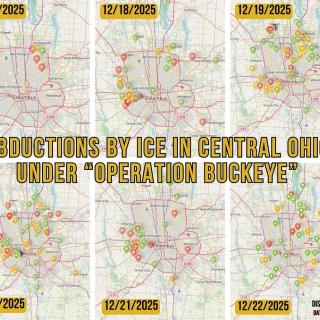Advertisement
According to Ohio State professor Dr. Brad Bushman, who’s been studying the influence of media violence on behavior for over 25 years, playing violent video games such as Call of Duty or Grand Theft Auto may not trigger someone into a gun-toting murderous rampage, but you are more likely to blow a loud horn into someone’s ear, pour hot sauce down their throat or ignore someone who’s dying on the side of the road after being run over by a car.
There’s no definitive link showing violent video games such as “first-person shooters,” which indirectly place you behind a very realistic gun so you can be rewarded for killing very realistic human beings, cause shooting rampages, says Bushman. Mostly because there’s no ethical way to run experiments, you can’t “randomly assign people to play violent video games and then give them guns to see what they do with them,” he told the Free Press.
There is definitive evidence, however, based on hundreds of studies, says Bushman, that shows playing violent video games, even for a few days in a row, increases aggressive thoughts, makes you more angry and also drains you of empathy. These effects, he says, were found over and over again when he and a team of other researchers reviewed 136 video game violence studies involving 130,000 participants from around the world.
Bushman has his critics and many are from the billion-dollar video game industry that claims over 500-million regular players across the globe, with over 90 percent of American boys calling themselves “gamers.” When a Bushman study is published, the industry is quick to counter that video games are an easy scapegoat for society’s ills.
But there are some very important persons wanting to know more about Bushman’s body of work. Namely the White House and the House of Representatives.
“Violent video games increase aggressive thoughts. Increase angry feelings. Increase aggressive behavior and decrease helpful behavior,” says Bushman, who testified a year ago in the wake of the Newton (Connecticut) massacre to a House of Representatives’ subcommittee, followed with a stint on President Barack Obama’s newly formed committee on gun violence.
“People are less helpful after playing violent video games and people become numb to the pain of others are suffering,” says Bushman. “They are much slower to help if others are injured.”
In 2012, while working in tandem with media violence researchers at the University Pierre Mendès-France in France, Bushman had 70 college students play either violent video game (such as Call of Duty) or a non-violent game. Both groups played for 20 minutes a day for three days. After each daily session, both groups were asked to play a loud and unpleasant sound, such as nails screeching across a black board, into the ear phones of someone described as a “loser.” Those who played violent games were much more likely to play the annoying sound, and administer it louder and longer compared to those who played non-violent games. What’s more this negative behavior pattern of longer and louder increased with each day of violent video game play.
“Violent effects were significant on day one, even bigger on day two, and even bigger on day three,” says Bushman. “In our study, people played only 20 minutes a day, in the real world people play much longer than 20 minutes. I imagine the effects would be even bigger.”
Indeed, friends of 34-year-old Aaron Alexis, who murdered 12 people at Washington’s Naval Yard back in September, claimed he was obsessed with Call of Duty, sometimes playing 16 hours straight. Coincidentally, the ultra-violent Grand Theft Auto 5 had been released just days before the massacre, and within three days earned $1 billion, making it the fastest selling entertainment product in history.
Suggesting a murderer may have been influenced by violent games is also a part of recent Central Ohio history. In late 2003 and early 2004 the “Highway Sniper” scare gripped the region when an elusive gunman was indiscriminately shooting at motorists on I-270 and other highways. Incredibly and fortunately, the shooting spree resulted in just one death, 62-year-old Gail Knisley of Washington Court House.
At the time, Miami-based attorney and anti-violent video game advocate Jack Thompson suggested to Ohio law enforcement they should stake-out the local GameWorks, which at the time was at Easton Mall.
Lo and behold, as it turned out, the shooter, Charles McCoy Jr., had spent a lot of time playing video games (many violent) and was known to frequent the GameWorks at Easton. When he was arrested after going on the lam, police said his few possessions consisted of his PlayStation 2 and the video game, The Getaway. McCoy is currently serving a 27-year sentence.
While both Alexis and McCoy were avid gamers, and many other mass shooters for that matter, both also struggled with mental illness. This is the mystery of wanting to cause extreme physical harm, says Bushman, there is no single factor even though in the aftermath of these tragedies the American public demands a solution.
“People want answers. Policy makers want answers. But there’s no single cause, there never is,” Bushman says. “There are many factors – guns, violent media, mental health – and they combine in very complicated ways to predict violent behavior. Violent video games are not the only factor, but not a trivial factor, either.”
But is it possible to apply Bushman’s research to end the Columbines and the Newtons?
Unless the outright censorship of the video game industry occurs, and all the guns in America were melted down as well, the answer is no.
However, Bushman says, as a whole, American culture is much too accommodating when it comes to our children and violent video games.
“Adults can make their own choices about whether to smoke or drink or play violent video games,” he says. “Children shouldn’t be smoking or drinking, nor should they be playing age inappropriate video games. The American Academy of Pediatrics recommends no more than 2 hours a day of screen time for 18 an under. That’s what I’m really concerned with – the children.”



